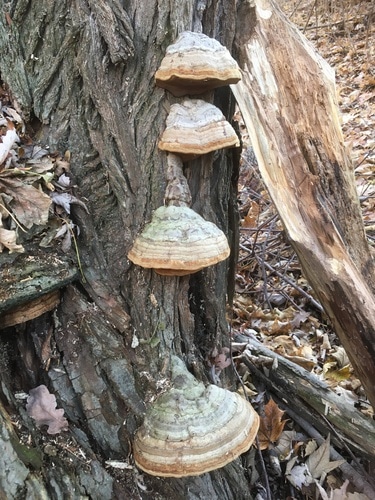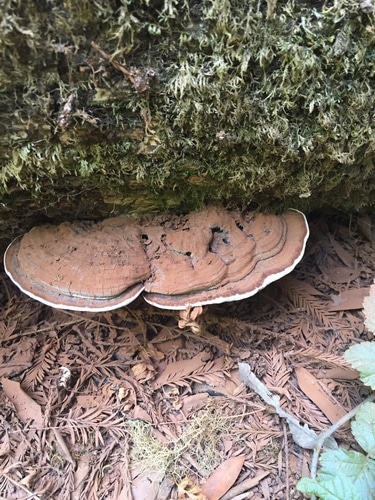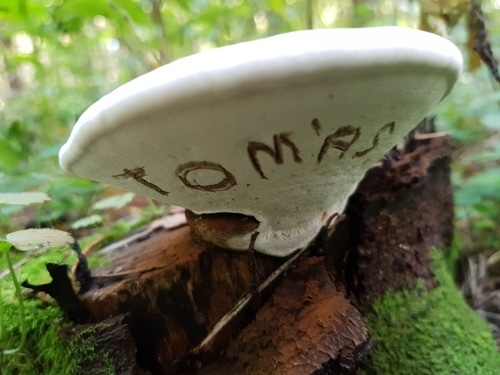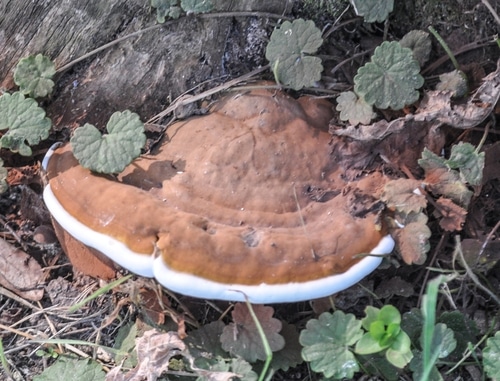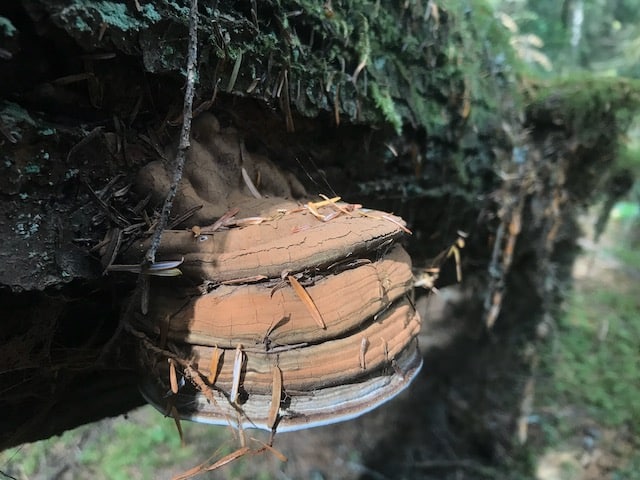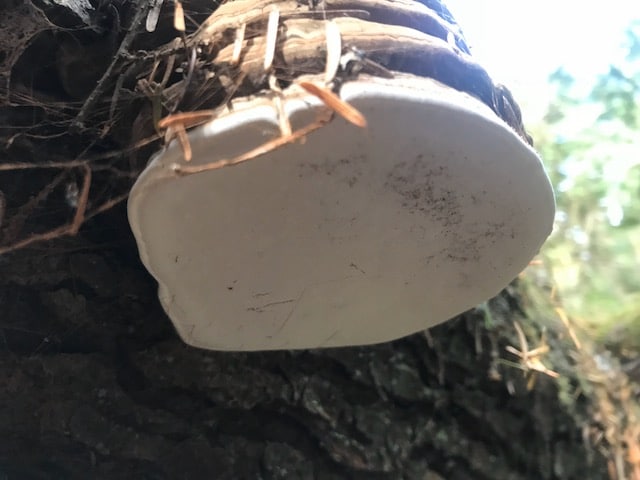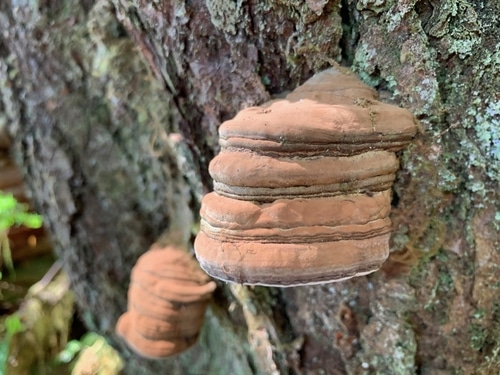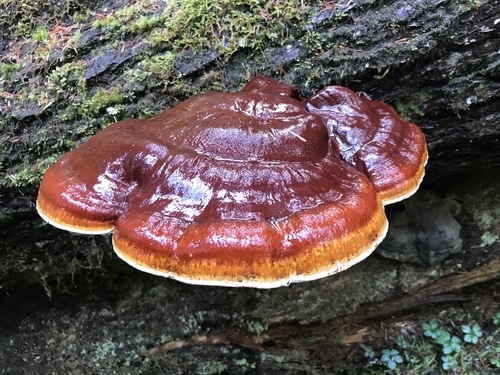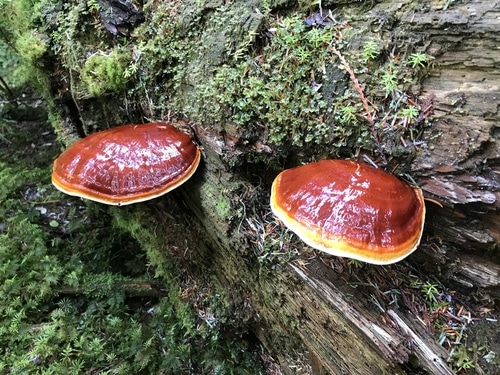[et_pb_section fb_built=”1″ admin_label=”section” _builder_version=”4.16″ global_colors_info=”{}” theme_builder_area=”post_content”][et_pb_row admin_label=”row” _builder_version=”4.16″ background_size=”initial” background_position=”top_left” background_repeat=”repeat” global_colors_info=”{}” theme_builder_area=”post_content”][et_pb_column type=”4_4″ _builder_version=”4.16″ custom_padding=”|||” global_colors_info=”{}” custom_padding__hover=”|||” theme_builder_area=”post_content”][et_pb_text _builder_version=”4.24.3″ _module_preset=”default” theme_builder_area=”post_content” hover_enabled=”0″ sticky_enabled=”0″]Ganoderma applanatum
Western Artist’s Conk
Western Varnished Conk
[/et_pb_text][et_pb_text _builder_version=”4.24.3″ _module_preset=”default” theme_builder_area=”post_content” hover_enabled=”0″ sticky_enabled=”0″]





[/et_pb_text][/et_pb_column][/et_pb_row][/et_pb_section]
Year-Round Polypores
These mushrooms are woody polypores. Due to their durability, you will surely find each of these throughout the year in the city and forests alike. Because of this, they are among the most noticed and photographed mushrooms in the Pacific Northwest and beyond.
Many of these woody mushrooms are used to make teas, and natural medicines.
[/et_pb_text][et_pb_text admin_label=”Text” _builder_version=”4.24.3″ background_size=”initial” background_position=”top_left” background_repeat=”repeat” hover_enabled=”0″ global_colors_info=”{}” theme_builder_area=”post_content” sticky_enabled=”0″]Ganoderma
Artist Conks
Ganoderma applanatum



Ganoderma brownii
Western Artist’s Conk


Ganoderma oregonense
Western Varnished Conk

[/et_pb_text][et_pb_text _builder_version=”4.24.3″ _module_preset=”default” theme_builder_area=”post_content” hover_enabled=”0″ sticky_enabled=”0″]Trametes versicolor
Turkey Tail
Learn how to tell the difference between a turkey tail mushroom, and a similar-looking mushroom here
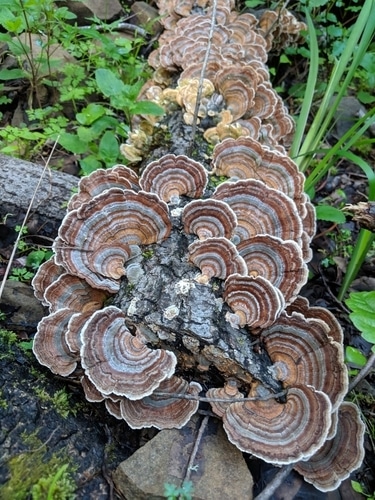
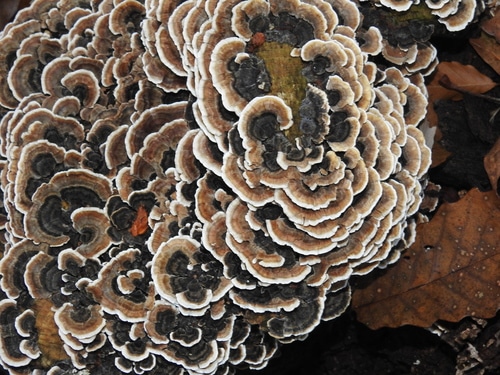
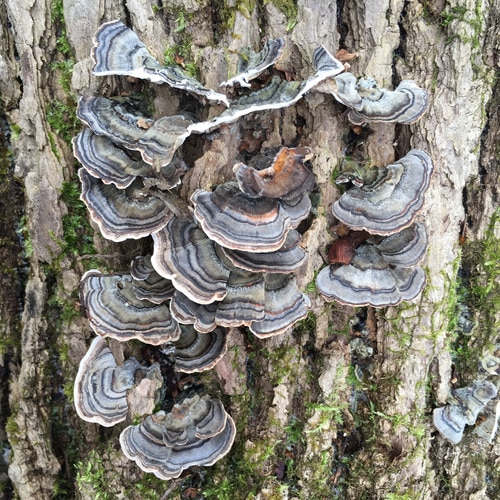
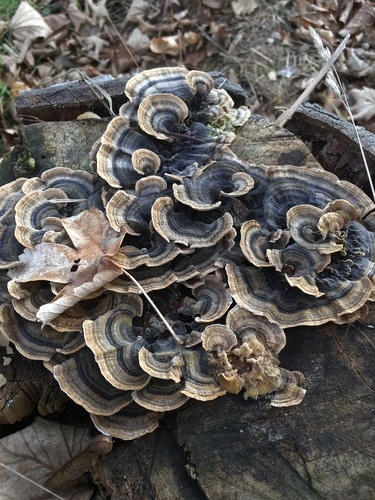
Fomes fomentarius
Hoof Fungus

